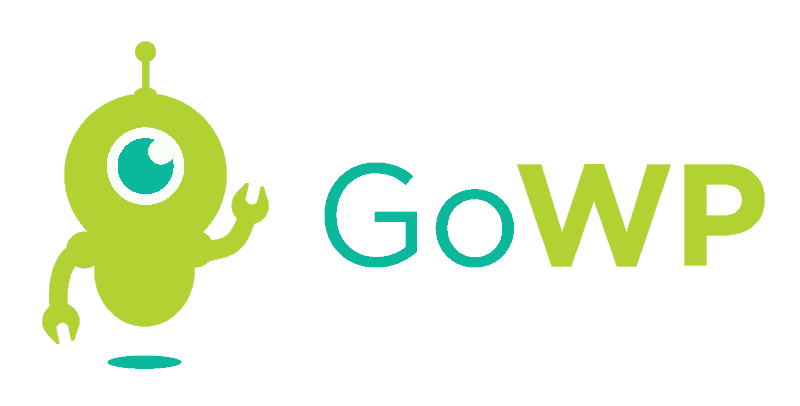As an agency owner, the prospect of outsourcing WordPress development projects offers a multitude of benefits, from cost efficiency to tapping into a global talent pool. However, navigating the outsourcing landscape can be daunting. Understanding how to effectively manage outsourced projects is crucial to maintaining quality, meeting deadlines, and ensuring client satisfaction. It’s essential to arm yourself with strategies that bolster your confidence in outsourcing web development.

Partnering with the right developers and maintaining clear lines of communication are key elements to a successful outsourcing experience. This not only involves articulating your project’s requirements but also understanding the competencies of the agency you engage with. Clarifying expectations from the outset ensures that your WordPress development project aligns with your agency’s standards and client needs.
Effectively outsourcing your web development can lead to significant gains, such as increased agility in project delivery and the ability to scale your operations without the overheads of hiring in-house. Your focus can remain on core business activities while your outsourcing partners handle the technical execution. This collaborative approach allows you to leverage expertise from around the world and deliver high-quality results to your clients.
Understanding the Basics of WordPress Outsourcing
WordPress outsourcing is a strategic approach to project management that can bring you significant value and a competitive advantage. Before diving into partnerships with external agencies, it’s crucial to grasp what outsourcing entails, its benefits, and the potential risks involved.
Defining Outsourcing and Its Relevance
Outsourcing in the context of WordPress refers to the delegation of tasks related to your WordPress website development, such as theme and plugin creation or custom website builds, to third-party specialists. This sector is a dynamic part of the IT outsourcing market, allowing you to tap into a pool of global talent that can deliver high-quality results often more efficiently than your in-house team.
Advantages of WordPress Outsourcing for Agencies
- Access to Expertise: WordPress outsourcing provides access to skilled professionals who are up-to-date with the latest WordPress trends and technologies.
- Cost Efficiency: It can be a cost-effective solution, eliminating the need for full-time salaries, benefits, and ongoing training for in-house staff.
- Focus on Core Business Functions: By outsourcing, you free your in-house team to focus on growth-driving activities.
- Scalability: You can adjust the scale of outsourced work based on project demand, which is particularly useful for handling peak periods without permanent staffing commitments.
- Faster Turnaround: Leverage different time zones for a quicker project turnaround, keeping your agency responsive and agile.
Risks and How to Mitigate Them
Outsourcing WordPress projects is not without its risks. Communication challenges, quality control issues, and security concerns are valid considerations.
- Clear Communication: Establish clear channels and protocols for communication. Tools like project management software can aid in keeping exchanges transparent and on-track.
- Quality Assurance: Set definite quality benchmarks and use continuous integration/continuous deployment (CI/CD) practices to ensure consistent standards.
- Security Measures: Insist on strict adherence to security best practices from your outsourcing partner to protect sensitive data.
- Contractual Clarity: Draft detailed contracts that define deliverables, timelines, and confidentiality to safeguard your interests.
Incorporating strategic outsourcing into your WordPress projects can contribute significantly to your agency’s success, provided you navigate this landscape with informed precision and caution.
Selecting the Right WordPress Outsourcing Partner
Choosing the right outsourcing partner is pivotal for the success of your WordPress projects. It’s about finding the balance between trust, skills, quality control, and a proven work portfolio.
Criteria for Assessing Potential Providers
When assessing potential outsourcing partners, consider the trustworthiness and reliability of the provider. Trust is fundamental in any partnership, particularly when entrusting an external company with your clients’ projects. Verify that they have secure methods for handling data and whether they have protocols for maintaining confidentiality. Inspect their quality control processes to ensure consistency in delivering high-quality work.
- Trust: Do they have transparent processes and positive testimonials?
- Quality Control: What practices do they have to maintain high standards?
Evaluating Skills and Competencies
Your outsourcing partner should possess a deep understanding and expertise in WordPress. Review a list of skills necessary for your projects, such as custom theme and plugin development, performance optimization, and security enhancements.
- Required Skills: Identify specific technical skills relevant to your WordPress needs.
- Expertise: Look for certifications or specializations that align with your project types.
Examining Past Work and Feedback
Scrutinize the outsourcing provider’s work portfolio to gauge their experience and quality of outcomes. Feedback from previous clients can offer insights into their work ethic and success in past collaborations.
- Portfolio: Are there examples similar to your project scope?
- Client Feedback: Seek out reviews or case studies that reflect the provider’s competency and reliability.
Engaging with an outsourcing partner whose capabilities match the demands of your WordPress projects can help you scale efficiently while maintaining a high standard of quality.
Streamlining Communication and Project Management
To successfully outsource WordPress projects, you must establish clear pathways for communication and project management. This ensures transparency, enhances productivity, and keeps your team aligned with deadlines and performance targets.
Effective Strategies for Collaboration
To foster effective collaboration within your agency, establish a culture of open communication. This begins with choosing the right communication channels to ensure team members and stakeholders stay informed and engaged. Regular team meetings and routine check-ins help everyone stay aligned with the project’s goals. Additionally, implementing a shared documentation system, where all team members can access and update project details, aids in maintaining a collective understanding of the project’s progress.
Tools and Techniques for Transparency
Transparency in project management hinges on the tools you use. Utilizing project management software like Asana, Trello, or Jira allows you to organize tasks, set clear expectations, and monitor progress in real-time. These platforms provide a visual overview of project stages and can be used to:
- Assign and describe tasks
- Track milestone completion
- Update team members on project status
These tools also often include features for direct messaging and file sharing, centralizing communication and fostering an open work environment.
Managing Deadlines and Deliverables
Your ability to manage deadlines and deliverables directly impacts your agency’s performance and profitability. Clearly defined milestones and deadlines should be communicated at the outset and built into your project management platform. This visual timeline should be accessible to all team members and updated regularly to reflect any changes. Additionally, regular assessments of deliverables against set timelines ensure timely identification and mitigation of potential delays, safeguarding against missed deadlines and maintaining consistent productivity.
Budgeting and Pricing Models for Outsourcing
When you outsource your WordPress projects, understanding the financial aspects is crucial. You’ll need to grasp how the costs are structured and select a pricing model that aligns with your budget while maintaining cost-effectiveness.
Understanding Outsourcing Costs
Outsourcing costs aren’t just about paying for the time spent on tasks. They include an array of elements such as salaries of the outsourced team, overhead, and often the costs associated with project management and quality assurance. To forecast your budget accurately, list all potential expenses and determine the average market rates for the services you’re outsourcing. Assess which parts of your project require specialized skills, as these often command higher prices due to demand for expertise.
Fixed Price vs. Time and Material Contracts
When considering a pricing model for your WordPress project outsourcing, you generally have two popular options:
- Fixed Price Contracts: You agree on a set price for the entire project with your outsourcing partner. This model is most suitable when your project scope is clear and unlikely to change. It allows precise budgeting, but it’s crucial to specify the work scope in detail to avoid additional costs later.
- Time and Material Contracts (T&M): Payment is based on the actual time spent and materials used. This model offers flexibility if your project may evolve or if it’s difficult to estimate the full scope at the outset. However, it requires careful monitoring to keep tabs on the ongoing costs to prevent budget overruns.
In either model, ensure all terms are clearly defined, including what constitutes an extra charge. Regularly review invoices and work reports to ensure everything is as expected. Choose a model that affords a balance between flexibility and financial predictability that suits your project’s needs and remains cost-effective.
Maintaining Quality and Security in Outsourced Projects
When outsourcing WordPress projects, you need to enforce stringent measures for both quality control and security. These efforts ensure that the end product meets your expectations and protects against potential vulnerabilities.
Best Practices for Quality Assurance
To maintain high-quality standards, start by clearly defining the project’s scope and milestones. Communicating your expectations and requirements upfront sets the stage for success. It is essential to implement a rigorous quality assurance (QA) process. This process should include:
- Regular Code Reviews: Aim for peer reviews with each update or batch of completed work. This ensures that the code adheres to WordPress coding standards and your specific requirements.
- Automated Testing: Invest in automated testing tools to catch bugs early. Regression tests are especially crucial after each update to ensure that new code doesn’t break existing functionality.
Strategies for Keeping WordPress Sites Secure
WordPress site security is paramount. To keep your outsourced project secure, employ the following strategies:
- Regular Updates: Keep WordPress, plugins, and themes up-to-date. Regular updates close security loopholes and protect your site from known vulnerabilities.
- Security Plugins: Use reputable security plugins that can fend off common threats and harden your WordPress site’s defences.
- Access Controls: Limit access strictly on a need-to-know basis. Ensure passwords are strong and changed regularly, and consider implementing two-factor authentication.
By adhering to these quality and security measures, you’re setting your outsourced WordPress project up for a robust and reliable performance.







